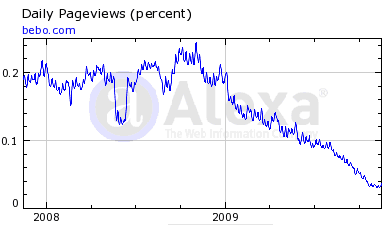Children who get bullied online should rightly be protected; so too should adults who get “cyberbullied” as it is called. Today, though, a major row has erupted between the police and Facebook over a seemingly innocuous little “button” that helps people cope with online abuse. Jim Gamble, the CEO of the UK’s “Child Exploitation and Online Protection Centre” (CEOP), has been on radio and TV all day doing a good impression of “Mr Angry”; he has been very outspoken in his criticisms of Facebook in particular. But, in spite of his in-depth policing experience, Mr Gamble appears to have missed the point on this topic.

He is very keen to point out that the social networking site from AOL, called Bebo, has included his button. When users of Bebo feel they are bullied or threatened in any way they can click on the button and be taken straight to the CEOP website for advice and to connect with a specially trained child protection officer. Sounds a great idea, unless you are Facebook. That’s because Mr Gamble’s button is happily in the corporate colours of Bebo – hardly the thing Facebook would want to include…! Furthermore, it is not really a little button at all – it’s massive when compared with all the other buttons on Facebook. At a basic level, it would just look completely out of place on Facebook.
Bebo, on the other hand, is really happy to take the button. After all, it has given it much-needed publicity at a time when it is falling in popularity. Bebo was bought by AOL in March 2008 and enjoyed a rise in popularity in the “honeymoon” after the takeover. But since then it has seen engagement drop consistently as data from Alexa (below) shows.

By showing that they are supporting a seemingly good system to defeat cyberbullying, Bebo knows it could gain some traction against the ever-rising popularity of Facebook. Throughout the period of Bebo’s demise, Facebook has enjoyed the reverse trend – a staggering rise in popularity on all measures. Far from being altruistic, the use of the CEOP logo on Bebo may well be driven by a public relations agenda more than anything else.
No doubt the people at CEOP are dedicated professionals seeking to do all they can to help children and rid society of cyberbullies. Thank goodness they exist and work tirelessly. Last year, for instance, they arrested 334 people and disrupted 82 sex offender networks. No-on can deny that is excellent work. Yet CEOP has now been sucked into a commercial argument for which they seem ill-prepared. For a start, CEOP does not appear to realise what will happen if Facebook does use the logo. They simply would not cope. Already, the logo produces 10,000 people a month contacting the police – and that’s before it was added to Bebo. With Facebook being on an entirely different level of usage, that number of people would simply escalate to a point where CEOP could not cope with the demand. The result would be children being let down – by going to a place of safety and support which actually cannot help them. A double whammy of negativity for those being bullied.
CEOP would be better advised to take an altogether different approach – handling this offline. Bullies are not created online; they learn to bully well before they can even use a keyboard. CEOP is yet another example of looking at things from the wrong direction. True, we need to deal with bullying when it happens, but far better to stop it happening in the first place. That means the resources being spent at CEOP may well be better placed in offline methods to prevent bullying. Also, online bullies are usually also offline bullies. Dealing with their offline abuse is likely to prevent their online bullying from happening as well. As a result, more resources ought to be spent on dealing with playground bullies.
Meanwhile, over at CEOP there is their own report (PDF) they might like to read. This study showed that children would carry on using social networking sites even if they did not have a reporting button. Looks like CEOP has shot itself in the foot; issuing angry demands for the installation of a reporting button when their own study demonstrates that children don’t really care whether there is one or not. They say they would use it if it were there, but wouldn’t be bothered if it weren’t.
What this study did show, however, was where CEOP should be focusing attention; the children said they would rather get their parents or teachers to deal with online bullying. But they often felt that these people could not help as they had a poor understanding of social networking. Rather than getting angry about Facebook, CEOP should divert its resources into educating parents. At the moment, all they are doing today with this constant bleating is turning yet more parents away from the likes of Facebook. And that means their children will continue to use it in their ignorance, with the resulting bullying going undealt with. Far from helping to reduce cyberbullying, CEOP today may well have helped to increase it.
